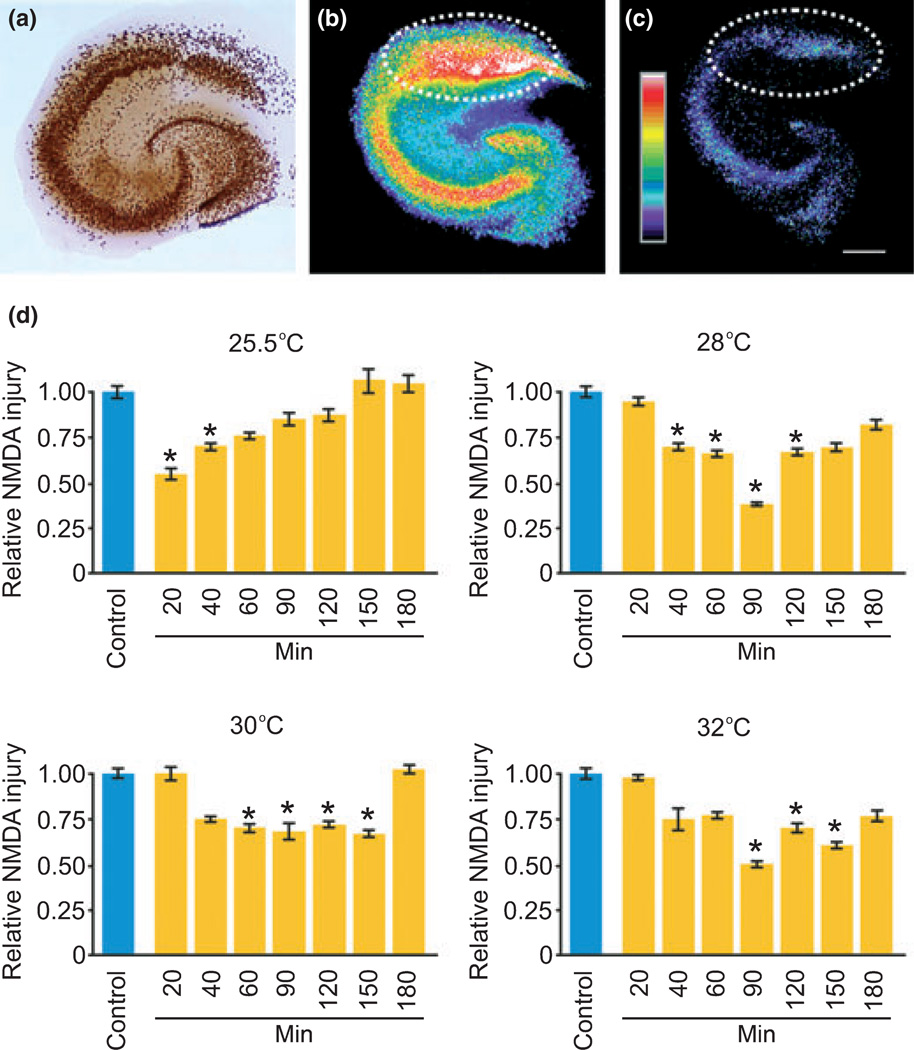Fig. 1.
Cold pre-conditioning was neuroprotective and followed a U-shaped temperature and time dose–response pattern. (a) Immunostaining for NeuN shows the typical principal neuron cytoarchitecture of a hippocampal slice culture with the CA1 pyramidal neuron area at the top, CA3 area to the left, and dentate gyrus to the lower right. (b–d) We used the fluorescent dead-cell marker Sytox to measure excitotoxic injury from NMDA exposure in the CA1 area (dotted white line area of interest) as a level of injury made relative to control injury cultures. Here, we show an exemplary image of control injury (b) and a significantly reduced level after cold pre-conditioning (25.5°C for 20 min) (c). Scale bar, 250 µm. (d) Cold pre-conditioning produced significant neuroprotective effects that followed a U-shaped or hormetic dose–response pattern over a range of temperatures and durations. For example, cold pre-conditioning at 25.5°C evoked significant (p = 0.002) neuroprotection from 20 (n = 8) and 40 (n = 39) min exposures, but not from 60 (n = 7), 90 (n = 8), 120 (n = 4), 150 (n = 7), or 180 (n = 6) min exposure times versus control (n = 45). Cold pre-conditioning at 28°C evoked significant (p < 0.001) protection from 40 (n = 12), 60 (n = 13), 90 (n = 8), and 120 (n = 17) min exposures, but not from 20 (n = 7), 150 (n = 8), or 180 (n = 7) min exposure times versus control (n = 41). Cold pre-conditioning at 30°C evoked significant (p = 0.01 at 120 min, all other times p < 0.001) protection from 60 (n = 26), 90 (n = 13), 120 (n = 8), and 150 (n = 14) min exposures, but not from 20 (n = 6), 40 (n = 7) or 180 (n = 8) min exposure times versus control (n = 40). Cold pre-conditioning at 32°C evoked significant (p = 0.005 at 120 min, all other times p < 0.001) protection from 90 (n = 17), 120 (n = 8), and 150 (n = 7) min exposures, but not from 20 (n = 8), 40 (n = 8), 60 (n = 8), or 180 (n = 6) min exposure times versus control (n = 15).

